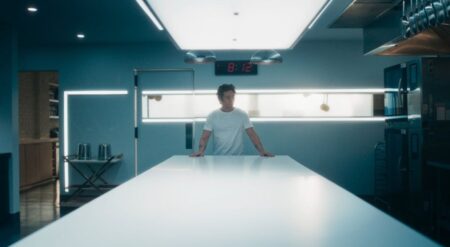
Humanity has often had a fascination with space. More specifically, trying to answer the question of whether or not we’re alone in the galaxy. There is a whole genre of film and tv dedicated to stories around this subject, one that continues to yield a huge fan base. Unfortunately, while shows and movies about the mysteries of space often captivate audiences, the reality of actual scientific study around the phenomena is quite often derided. If only there was a documentary that detailed the historical investigations and first-person accounts of observation and contact with UFOs. Well, never fear, the Netflix original series Top Secret UFO Projects: Declassified is here to save the day.
The docu-series details some of the major UFO events since World War II, paired with testimony and analysis from people familiar with the situation from a whole slew of backgrounds. The series is narrated by Robert Polo and produced and created by Petr Vachler. The show focuses primarily on the US government’s role in investigating the incidents and reportedly the coverup of the results.
The show consists of six episodes at approximately 45 minutes apiece, which honestly is two episodes too long to really make the message stick. The episodes are formatted to deliver one overall message, interspersed with accounts of supposed real-life events or encounters with either UFOs or extraterrestrial life. The issue, however, is that the first two episodes feel painfully slow.
Those first two episodes attempt to lay the groundwork for how past situations, such as Project Blue Book and the White House cover-ups, were handled. This is meant to be juxtaposed with modern events and reinforce the progress made since then with recent events that are harder to deny. To which, the show does make its point, but only after hammering it through at a dull pace. The topics in question could have easily been condensed into a singular episode to set the tone for the series because it’s really only there as a comparative statement. That statement being, look how much information was potentially withheld and classified behind government walls while smearing the science that seeks to explain these events and these sightings. In other words, look how far we’ve come.
Beyond that, the narrator lacked any real energy; he managed to make a topic filled with mystery and intrigue unexciting. Parallel to that, the background musical levels of the show were often out of sync with the testimonials given by key figures, making it difficult to hear what they were saying at points. Not to mention, there was a level of hokeyness to the choice of music. Harsh, perhaps? I get this is fringe science, but it felt like the overall purpose of the show was to lend credence to this branch of science, but minute choices such as these knee cap the show before it has the chance to get started.
Where the show actually becomes relatively interesting, however, is within the episodes titled “Code Name Aurora.” “Hacked and Leaked.” and “Soviet Secrets.” The former of this list delves into the reverse engineering direction the government and private companies have taken to advance technological and military capabilities.
The fourth episode builds further upon the prior, noting how famed guitarist Tom Delong of Blink 182 formed To The Stars Academy, an organization dedicated to the declassification of UFO investigation evidence. This is the prime content of the show, as they go through the prominent leaking of the Tic Tac UFO video footage from 2004 that made its way around the internet. However, what I found most compelling was the testimony from military personnel giving their account of what they saw and how impossible the results were. It’s actually quite breathtaking.
The fifth episode shifts its focus away from US sightings and recounts international incidents with a specific focus on Russia. One such account that sent shivers down my spine was the knowledge of USO’s—unidentified submerged objects—to which reportedly there is even more evidence from the Navy keep tracking of as opposed to the Air Force. For Russia, however, it’s explained that the country will likely never declassify this information as both the UFO and USO sightings would give away their military operations as far as secret sights and submerged spy operations.
Lastly, due to the show stretching out to six episodes, there’s a lot of fluff between sightings and first contact made with numerous individuals. Rather than reinforcing the message, it feels more like padding for the show. Some of the eyewitness events are interesting, but there are so many it over-saturated the point.
Overall, I think Top Secret UFO Projects: Declassified has some great content that makes for an engaging watch. The problem is the show is hampered by various factors, such as the first two episodes adding little value, a less than engaging narrator, and the padding of episodes with filler testimonials. There are three episodes in here that are must-watch, but other than that, the show lacks a good editorial team to really help focus the show and drive the message home.
Top Secret UFO Projects: Declassified is available now exclusively on Netflix.
Top Secret UFO Projects: Declassified
-
Rating - 5/105/10
TL;DR
Top Secret UFO Projects: Declassified has some great content that makes for an engaging watch. The problem is the show is hampered by various factors, such as the first two episodes adding little value, a less than engaging narrator, and the padding of episodes with filler testimonials. There are three episodes in here that are must-watch, but other than that, the show lacks a good editorial team to really help focus the show and drive the message home.






